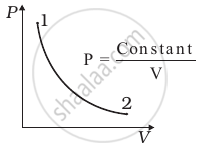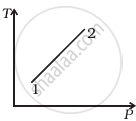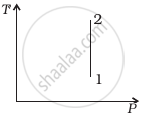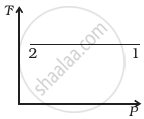Advertisements
Advertisements
प्रश्न
Can the given heat energy be completely converted to work in a cyclic process? If not, when can the heat can completely converted to work?
उत्तर
According to the first law of thermodynamics, work can be completely converted into heat. Since the system comes back to the initial stage, the change in the internal energy is zero. In the cyclic process, heat can flow into the system and heat flows out of the system. The net heat transferred to the system is equal to the work done by the gas.
Qnet = Qin = Qout = W (for 3 Cyclic Process)
APPEARS IN
संबंधित प्रश्न
Answer in brief.
Why should a Carnot cycle have two isothermal two adiabatic processes?
Draw a p-V diagram of the irreversible process.
Draw a p-V diagram showing positive work at constant pressure.
Apply first law for an isobaric process.
In a petrol engine, (internal combustion engine) air at atmospheric pressure and temperature of 20°C is compressed in the cylinder by the piston to `1/8` of its original volume. Calculate the temperature of the compressed air. (For air γ = 1.4)
For a given ideal gas 6 × 105 J heat energy is supplied and the volume of gas is increased from 4 m3 to 6 m3 at atmospheric pressure. Calculate
- the work done by the gas
- change in internal energy of the gas
- graph this process in PV and TV diagram
Two identical samples of a gas are allowed to expand (i) isothermally (ii) adiabatically. Work done is ____________.
We consider a thermodynamic system. If `Delta"U"` represents the increase in its internal energy and W the work done by the system, which of the following statements is true?
The work done on the system in changing the state of a gas adiabatically from equilibrium state A to equilibrium state B is 22.4 J. If the gas is taken from state A to B through another process in which the net heat absorbed by the system is 15.5 cal, then the net work done by the system in the latter case is ______.
( l cal = 4.2 J)
Consider P-V diagram for an ideal gas shown in figure.

Out of the following diagrams (figure), which represents the T-P diagram?
 (i) |
 (ii) |
 (iii) |
 (iv) |
